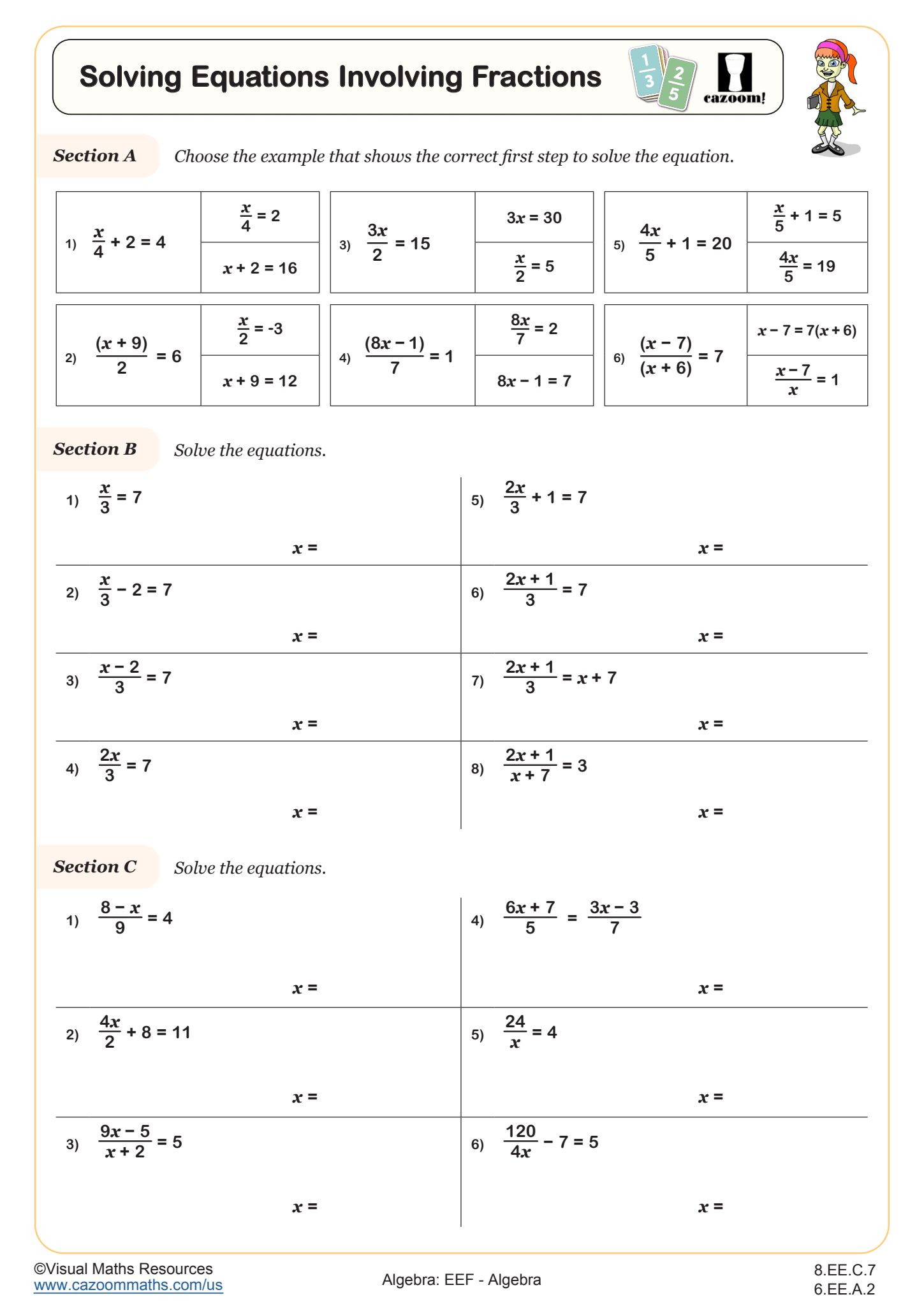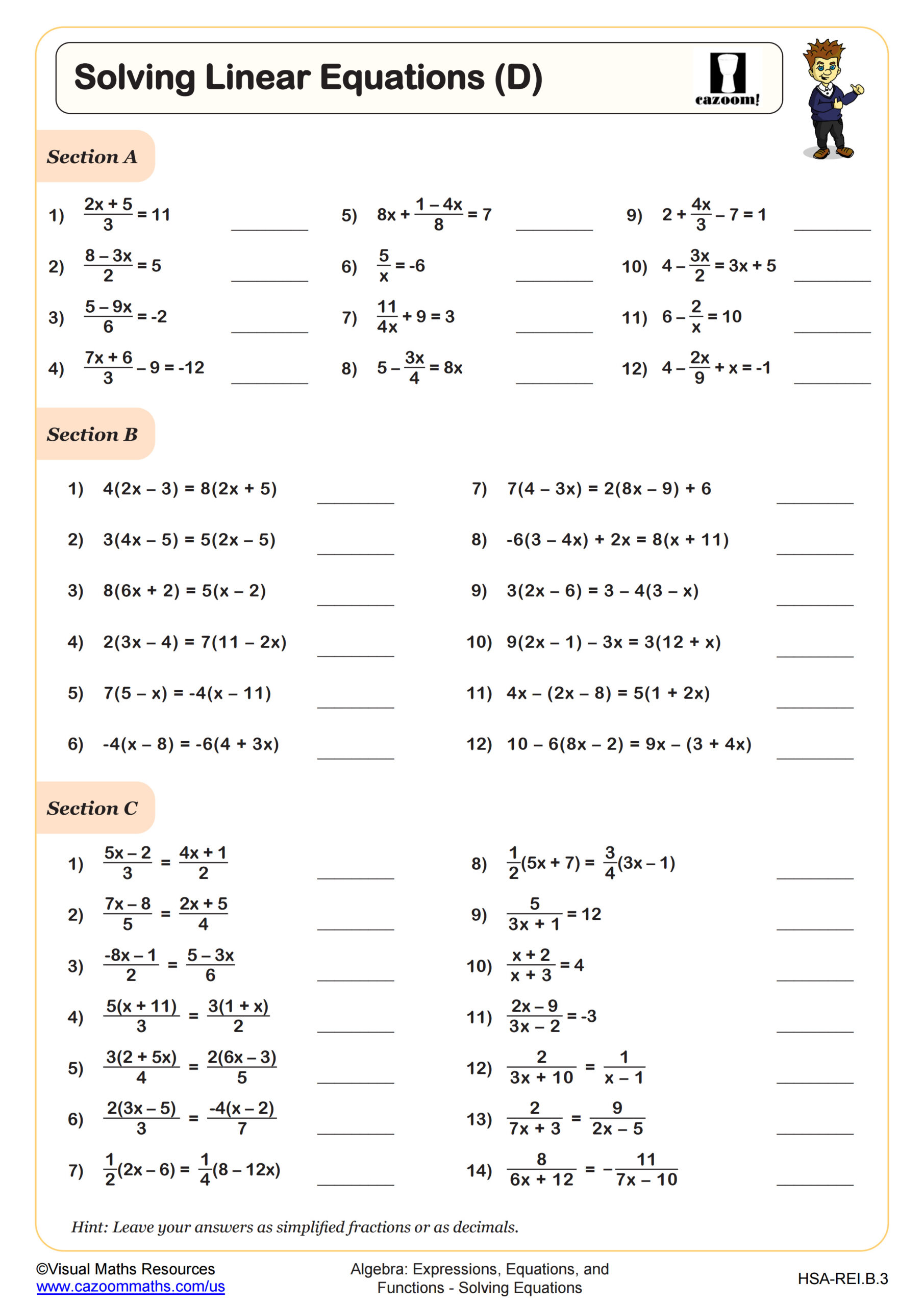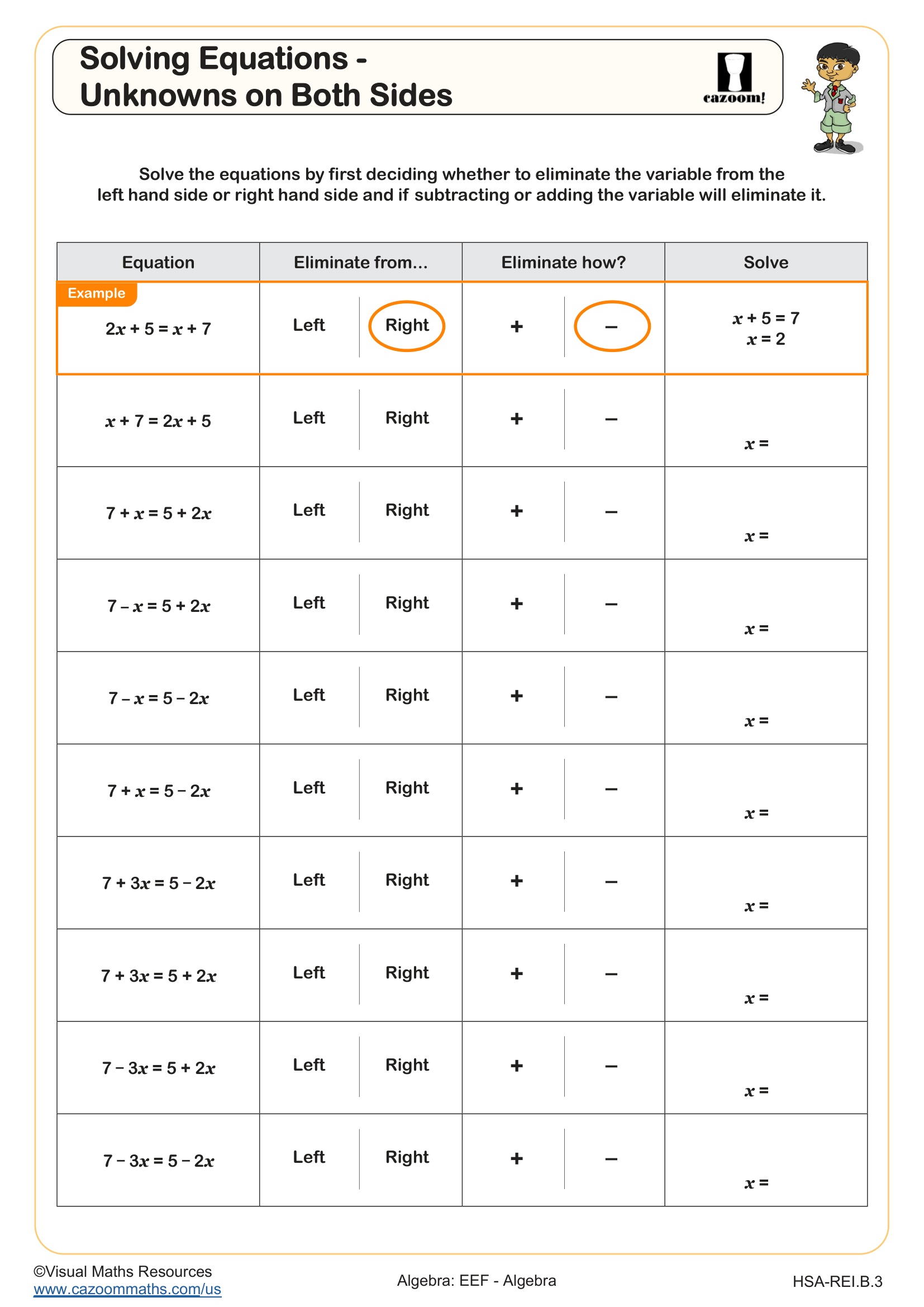Loading...
Back to:
Solving Equations Involving Fractions WORKSHEET
Suitable for Grades: 6th Grade, 8th Grade
CCSS: 6.EE.A.2, 8.EE.C.7
CCSS Description: Write, read, and evaluate expressions in which letters stand for numbers. a. Write expressions that record operations with numbers and with letters standing for numbers. For example, express the calculation “Subtract y from 5” as 5 – y.b. Identify parts of an expression using mathematical terms (sum, term, product, factor, quotient, coefficient); view one or more parts of an expression as a single entity. For example, describe the expression 2 (8 + 7) as a product of two factors; view (8 + 7) as both a single entity and a sum of two terms. c. Evaluate expressions at specific values of their variables. Include expressions that arise from formulas used in real-world problems. Perform arithmetic operations, including those involving whole-number exponents, in the conventional order when there are no parentheses to specify a particular order (Order of Operations). For example, use the formulas V = s3 and A = 6 s2 to find the volume and surface area of a cube with sides of length s = 1/2.
Solve linear equations in one variable. a. Give examples of linear equations in one variable with one solution, infinitely many solutions, or no solutions. Show which of these possibilities is the case by successively transforming the given equation into simpler forms, until an equivalent equation of the form x = a, a = a, or a = b results (where a and b are different numbers). b. Solve linear equations with rational number coefficients, including equations whose solutions require expanding expressions using the distributive property and collecting like terms.
Solve linear equations in one variable. a. Give examples of linear equations in one variable with one solution, infinitely many solutions, or no solutions. Show which of these possibilities is the case by successively transforming the given equation into simpler forms, until an equivalent equation of the form x = a, a = a, or a = b results (where a and b are different numbers). b. Solve linear equations with rational number coefficients, including equations whose solutions require expanding expressions using the distributive property and collecting like terms.
Solving Equations Involving Fractions WORKSHEET DESCRIPTION
This worksheet systematically develops students' skills in solving linear equations involving fractions.
Section A challenges students to identify the correct first step for various fractional equation types.
Section B consists of 8 minimally different and increasingly difficult equations to solve. This helps students to see how small changes affect the order of inverse operations and gradually builds confidence to solve complex equations.
There are a further 6 equations to be solved in Section C which do not follow the same structure as in Section B.
Solutions to equations are positive and negative throughout as well as integer, fractions and decimals numbers.




